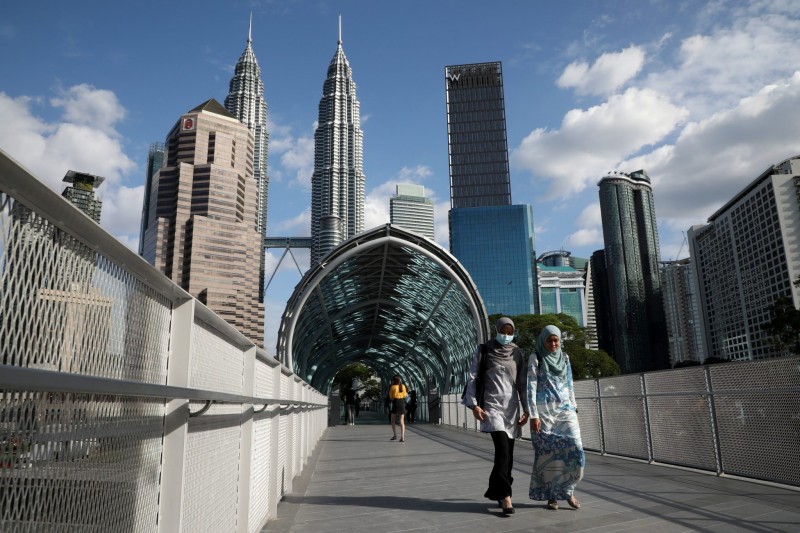
Image credit: East Asia Forum
PETALING JAYA: The effect of stronger tourism activity is expected to boost Malaysia’s gross domestic product (GDP) by at least one percentage point (ppt) in 2023, via further recovery in tourist arrivals, resumption of China outbound travelling, and sustained domestic tourism demand.
In a report, UOB Global Economics and Markets Research says the expected stronger tourism activity further supports its economic growth forecast of 4% for Malaysia in 2023.
The research unit pointed out that the global tourism sector is expected to make a big leap this year as China reopens its borders.
The World Tourism Organisation projects that international tourist arrivals could reach 80% to 95% of pre-pandemic levels in 2023 (versus 63% in 2022) despite lingering global headwinds.
Before the pandemic, more than 32 million Chinese travellers visited South-East Asia, mainly to Thailand, Vietnam, Malaysia, Cambodia, and Laos.
UOB Research also noted that overall tourism’s contribution to Malaysia’s economy is higher than the average level of 4.4% in Asia-Pacific, with the country’s tourism direct GDP at 6.8% in 2019 (versus 6.5% in 2018).
Also, Malaysia registered a 1% increase in foreign tourist arrivals to 26.1 million in 2019, the second highest annual inbound tourist arrivals since data records began in 1981.
Chinese tourists made up 3.1 million (or 11.9% share), to rank as the third source of inbound tourist arrivals for Malaysia in 2019, after Singapore (10.2 million or 38.9%) and Indonesia (3.6 million or 13.9%).
Tourism receipts from China tourists (RM15.3bil or 17.8% of Malaysia’s total tourist receipts of RM86.1bil in 2019) ranked second, overtaking Indonesian tourists’ spending in Malaysia (at RM12.9bil or 15% share) and just RM5.3bil behind Singaporeans’ spending in Malaysia (at RM20.6bil or 23.9% share).
The higher spending capacity of China tourists based on average per capita expenditure of RM4,921 – ranks higher than Singapore (at RM2,022) and Indonesia (RM3,571).
Chinese tourist’s spending power had even risen above some matured economies.
Generally tourist receipts flowed into country-specific tourism goods (shopping, 33.6% of total receipts), accommodation (24%), food & beverages (13.3%), local transportation (7.6%), and entertainment (3.4%).
Based on the tourism direct GDP performance, the tourism industry helped to increase Malaysia’s employment by 2.9% to 3.6 million persons in 2019. This contributed 23.6% to total national employment. Food and beverage serving services (34.7% share) and retail trade (32.5% share) were the main industries in tourism employment in 2019.
Meanwhile, although the tourism sector staged a rebound in 2022 as Malaysia reopened its economy and borders from April 1, 2022, the sector has yet to fully recover to pre-pandemic levels in part due to the prolonged Covid lockdowns in China, higher global inflation particularly airline ticket prices, caution amid lingering pandemic risks, and capacity constraints including labour shortages.
UOB Research noted that the recovery of Malaysia’s tourism sector last year was largely buoyed by strong domestic tourism demand as inbound tourist arrivals only recovered to 5.6 million or 21.3% of 2019 levels in the first nine months of 2022.
“Key risks to Malaysia’s tourism outlook include a weaker global outlook, slower China recovery and return of China tourists, capacity constraints, and inflation risks,” said UOB Research.
The research unit added that one challenge is balancing the impact on inflation as China’s reopening and surge in demand may put upward pressure on prices of energy and other related goods and services.
Regarding the potential effect of higher tourism demand on Malaysia’s inflation, UOB Research said it estimated that every 10% increase in the prices of tourism related services could directly add 0.4 ppt to Malaysia’s headline inflation (versus the research unit’s forecast of 2.8% for 2023).
In Malaysia’s consumer price index (CPI), tourism related services components including transport services; entertainment, recreation and cultural services; package tour; and accommodation services account for 4.4% of overall CPI weight.
“It should be noted that we did not include the effect on prices of food and beverage as well as restaurant services due to its sizeable CPI weight that could overinflate the estimate.
“However, we do see potential upside risk given that it is the third largest expenditure item for tourists in Malaysia,” said UOB Research.
Source: https://www.thestar.com.my/business/business-news/2023/02/07/stronger-tourism-activity-poised-to-spur-economy

